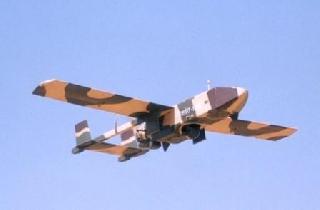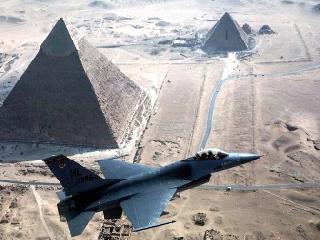
An unrelated photo of Nishant UAV developed by DRDO
NEW DELHI (PTI): India is looking to procure helicopter-shaped Unmanned Aerial Vehicles to airdrop small commandos units for launching special operations to counter terrorism and naxal menace with added swiftness and stealth.
The UAVs till now were used by various security forces to gather intelligence and conduct reconnaissance missions in unfriendly terrain but commandos onboard is a maiden initiative.
The Qualitative Requirements (QRs) for the rotary wing Unmanned Aerial Vehicle (UAV) floated by the Home Ministry specify that the air borne machine should be able to "deploy two to three men team" at a short notice.
Experts handling the technology in the Home Ministry said that such UAVs have recently been used by the NATO forces in Afghanistan and it can carry men by replacing the equivalent weight of the payload that the UAV is stipulated to bear.
Such operations, by deploying a crack commando team on-board the UAVs, can be undertaken in case of a terror attack in urban areas and even naxal zones, sources said.
The Draft QR specifically states that the "UAV should be capable of rapid deployment with a detachment not exceeding two to three men and should have all weather day and night operations capability", an essential requirement for such machines to perform in the tough and unknown terrains.
"The system (UAV) must be able to detect and acquire the designated targets. The sensor packages must provide a high quality imagery resolution to permit target detection, recognition, identification and accurate location of targets, move of personnel and vehicles.
"The UAV must be capable of being deployed and operated in built up areas and narrow lanes during counter-terrorist and counter-hijack operations," the QR said.
The new desired UAVs for the security forces including the elite NSG, will also have the capacity to record data upto 80 Gega Bytes (GB).
The security forces, according to sources, have asked for an "intelligent" UAV which can change its pre-fed programming and go into a "loiter" mode in the operations area to suit the need of the operation.
The UAV should also be capable "of providing real time high quality video with full flight telemetry and capable of tackling ground targets, both static and mobile".
The UAV is desired to cruise at a speed of 30 knots and above with hovering and hanging facilities in the air and the sensors deployed on it should pick up the target at 400 metres. It should also be airborne for about six hours, the QR floated after consultations with various security agencies said.
Sources said the desired UAV should have a platform to enable simulation exercises for troops prior to an operation and should have all facilities of maintenance and product support.
 Previous Article
Previous Article Next Article
Next Article













The Indian Air Force, in its flight trials evaluation report submitted before the Defence Ministry l..
view articleAn insight into the Medium Multi-Role Combat Aircraft competition...
view articleSky enthusiasts can now spot the International Space Station (ISS) commanded by Indian-American astr..
view article